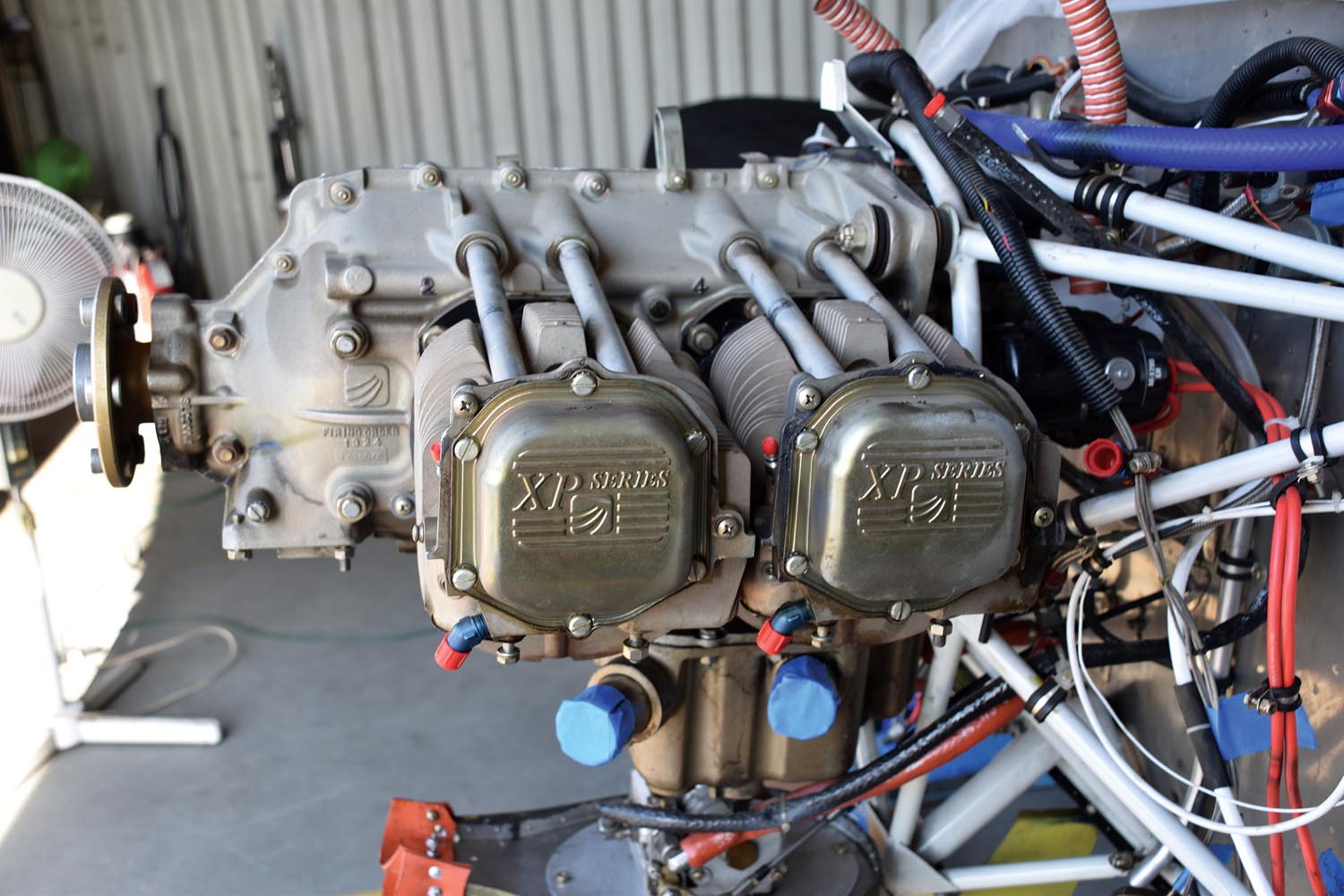
Sometimes the decision to overhaul an engine is pretty easy. It may begin sending you undeniable clues: A high-time engine starts to have a lot of metal show up in the filter at oil change time or perhaps a takeoff roll suddenly strikes you as way too long on that old engine. For whatever reason, you just know that the old mill is due for a freshening.
Sometimes the decision is harder. Maybe you just acquired a plane with a low-time engine that hasn’t been flown much in the last several years. You have heard about the perils of letting an engine sit unused for an extended period of time, but 300 hours is such a low time for a new engine to need major surgery. This sad story is about just such an engine, but the approach to the decision process is similar no matter the engine.
Initial Evaluation
Any engine evaluation begins the same, with a series of questions usually asked as part of a condition inspection. How has the plane been flying? Does the engine seem to be making good power? What is the rate of oil consumption in the last year or so? How did the differential compression test come out? How much metal did you find in the oil filter and sump screen? When you examined the cylinders with a borescope what did you find?
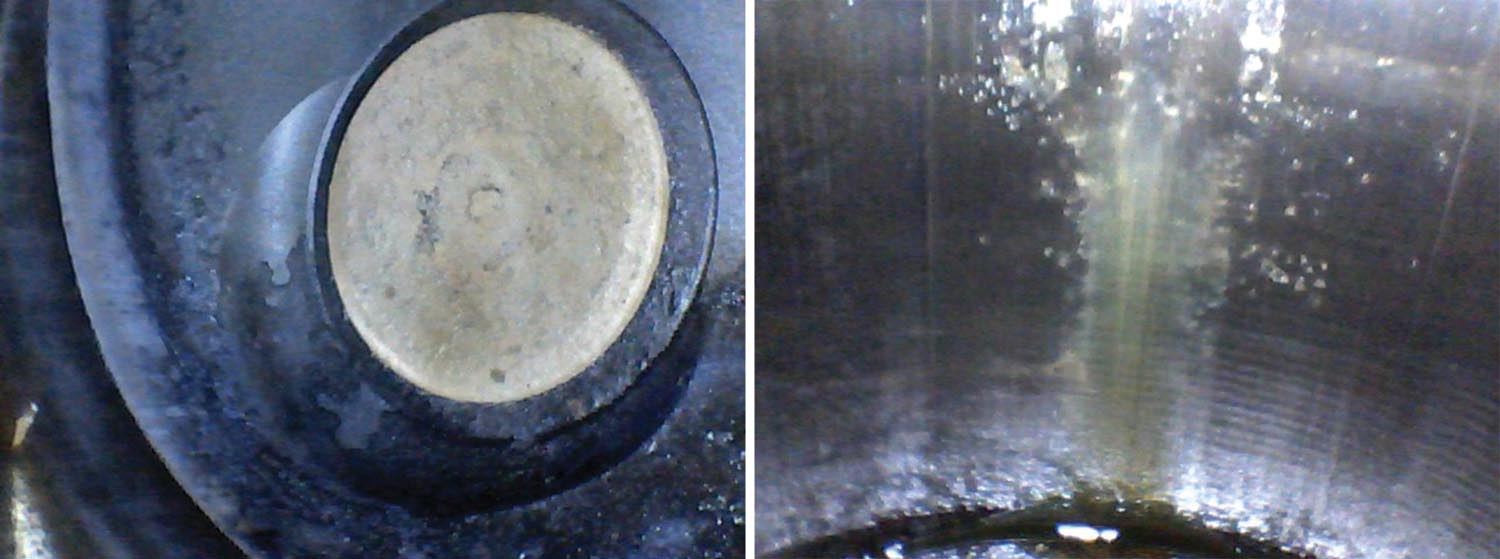
Usually all of the answers to these questions are positive in nature. Everything looks good, so you go flying for another year with confidence in your airplane’s powerplant. But sometimes the answer to one or more of those questions is not good at all. If you find metal when you change the oil you can refer to Lycoming Service Instruction 1492D. If your compression test produces troubling results, Lycoming Service Instruction 1191A can give you guidance for interpreting the results. Rotax has similar information in its maintenance publications.
The engine in this article did not fail these standard tests, so we will not go into more detail on those points here. This problem revealed itself first with a visual inspection of the cylinders. With the advent of the affordable electronic borescope it should now be standard practice to borescope an engine at every condition inspection or whenever a problem is suspected.
This is where things came off the rails for our new-looking Superior IO-360 engine with a mere 281 hours on the tach. The borescope showed rust—lots of rust in three of the four cylinders. This plane was 11 years old. You can do the math yourself. It had only been flown about 25 hours per year, and in the last four or five years it was closer to seven or eight hours per year. This is not how you keep an engine in good shape.
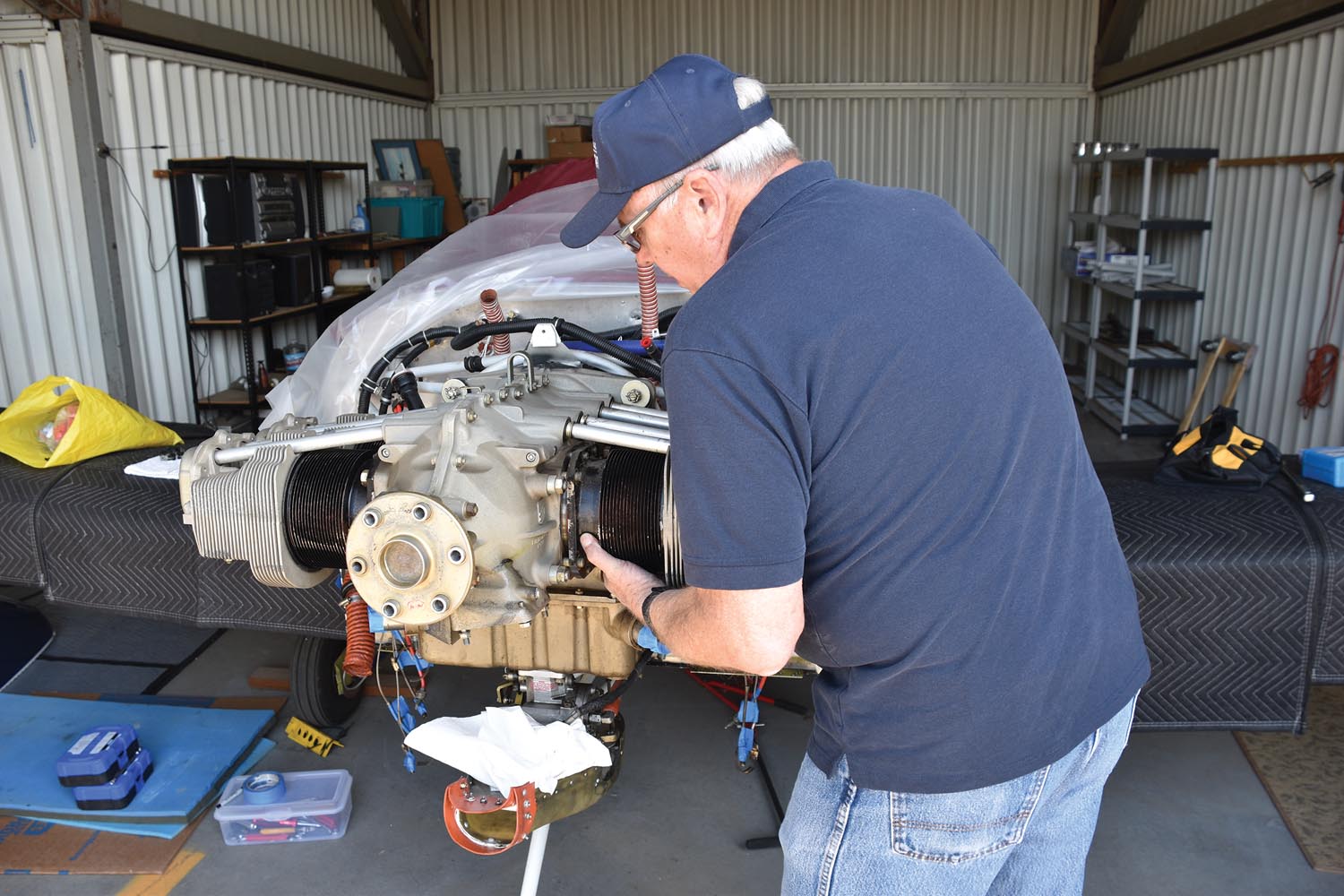
Now What?
The borescope revealed an ugly amount of rust on the cylinder walls but the valves looked great. What to do about that rust—that was the vexing question. The engine looked almost new on the outside and the oil filter had almost no metal in it. Could the engine really be in such terrible shape? Well, at least the top end was. There was extensive evidence of rust with some pitting of the cylinder walls. The next question was, what about the cam? Lycoming engines have a well-known weakness for acquiring rust on the cam and lifters if not frequently flown or well preserved, so this was becoming a major concern.
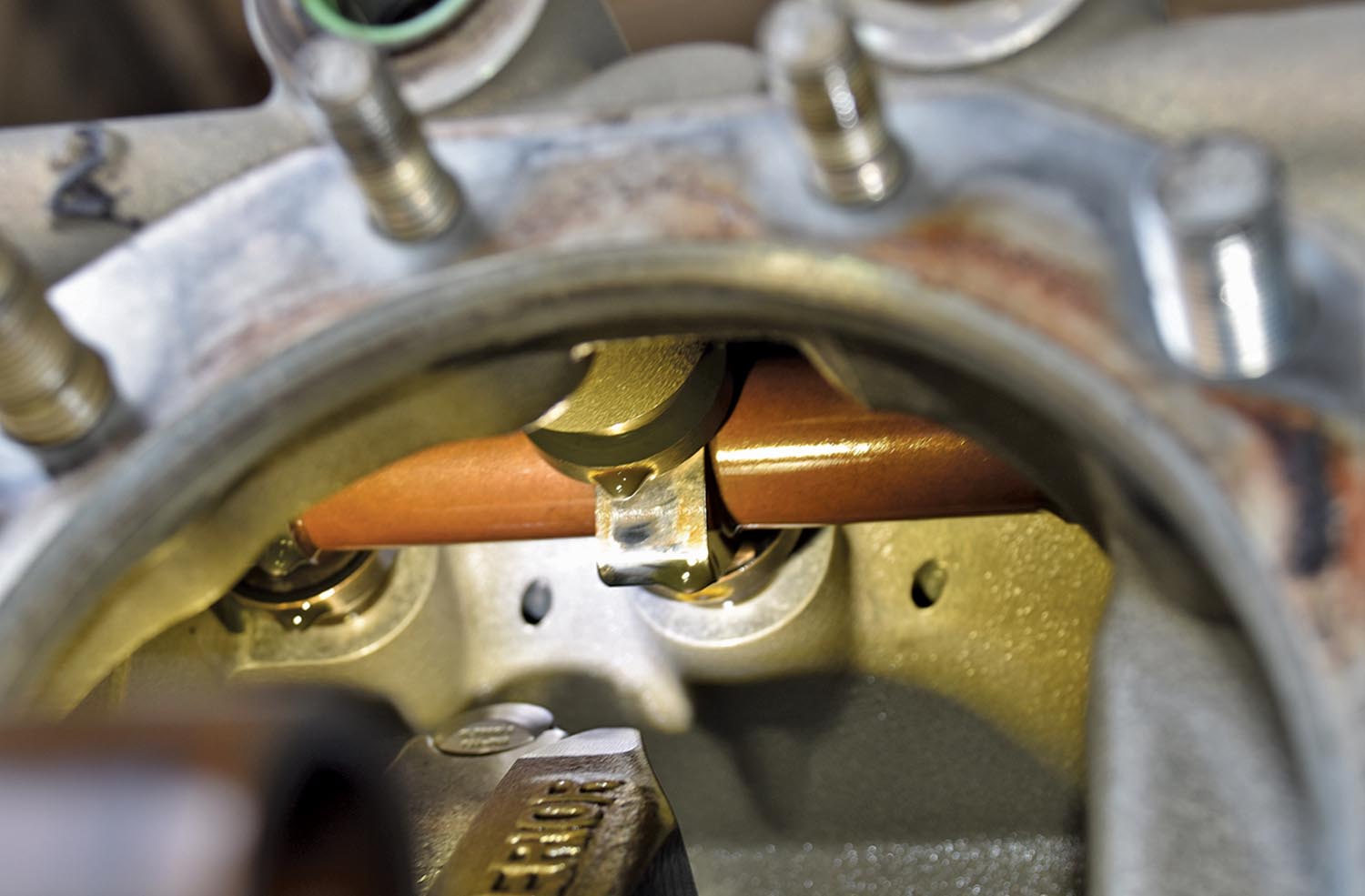
The cylinder condition said that a top overhaul (an overhaul and/or replacement of pistons and cylinders with valve work as needed) was the minimum required to get this engine into flying shape. With this in mind it was time to strip the extraneous parts from the engine to prepare for cylinder removal. It should be noted that removing cylinders with the hope of limiting the work to a top overhaul is very different from removing cylinders from an engine where the decision to perform a major overhaul has already been made. Protecting the crankshaft bearings from shifting is a major priority if the engine work is to be limited to a top overhaul. Any movement of the crankshaft when the case studs are loose risks bearing shift, which means a complete teardown. We were trying to avoid that at this point.
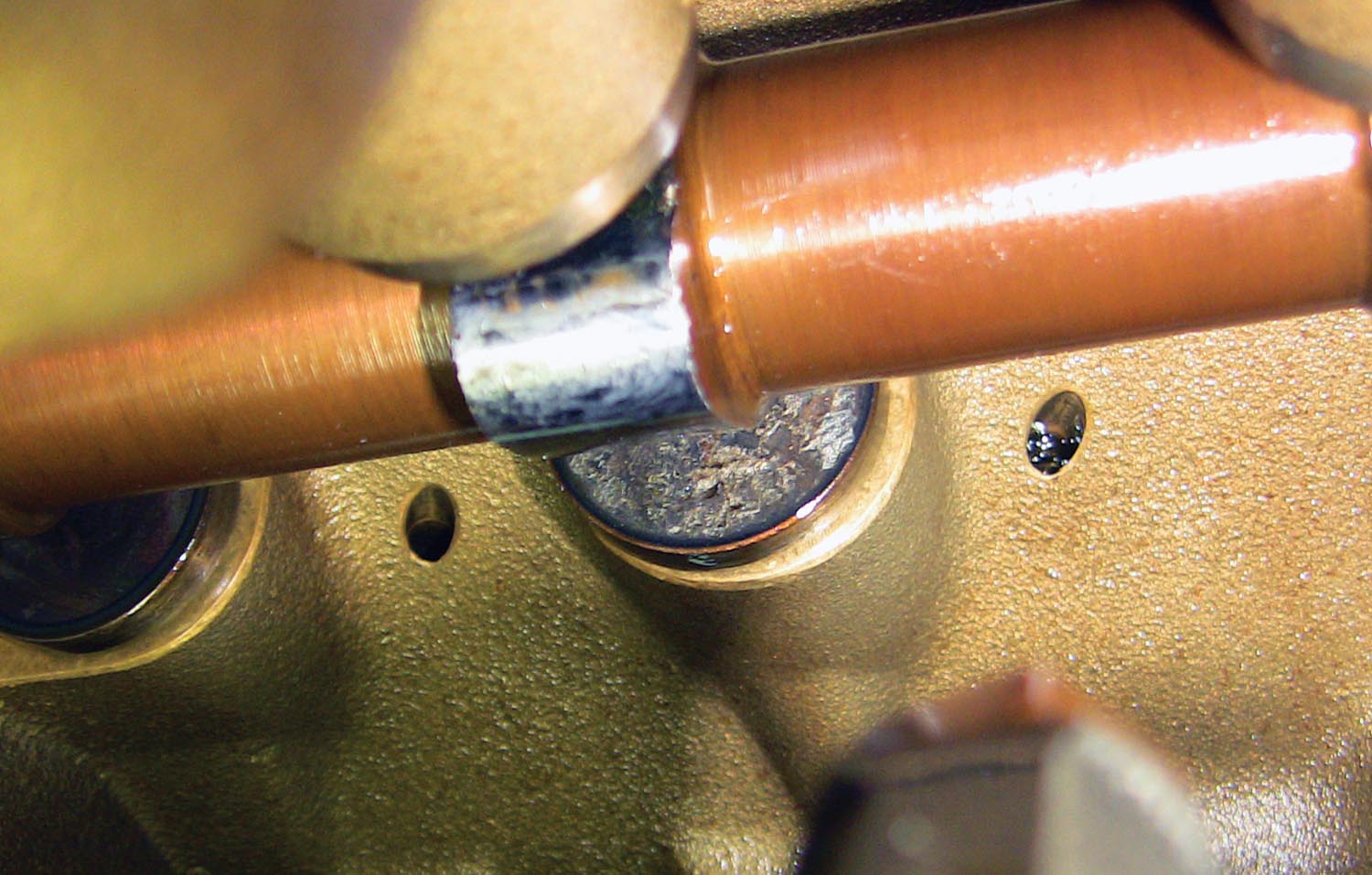
Cylinder Removal
The first step in either case is to remove the baffles and exhaust system. If you are only planning to overhaul one cylinder the removal can be limited to one side of the engine. Next the intake tubes and oil return lines need to come off. It is a very good idea to mark parts as you remove them so they can go back together as they came apart. Taking a few photos with your smartphone can also be very helpful. One place labeling can be especially helpful is with the spark plug wires. To be extra safe label each wire with cylinder number and position (top or bottom). That way no matter where the wires end up you can quickly get them back in the right place. Be sure to remove primer lines or fuel injection lines, securing the exposed ends to prevent dirt from entering. EGT sensors should have already been removed, but now would be a good time to also remove CHT sensors and the line to the manifold-pressure sensor.
At this time, you can remove the valve covers and rocker arms, or you can leave them in place and remove them later. In any case, these parts will have to come off eventually to overhaul the cylinders. Before proceeding further, it is best to rotate the crankshaft until the cylinder to be removed is at top dead center (TDC). This gives you more room to work with when you remove the wrist pin later and allows a better view of the camshaft—but primarily applies when you’re doing just one cylinder.
The last step is to remove the nuts that hold each cylinder in position. This should be done one cylinder at a time with a torque plate installed after each cylinder is removed. Cylinder removal will require special wrenches that are available from Aircraft Spruce and other aviation vendors. They come in two types. The most common type has a 12-point box wrench end on one end and a place to attach a 1/2-inch ratchet or breaker bar on the other. The less common type required for narrow deck and IO-390 engines has a 6-point Allen wrench end needed to engage the socket-head nuts on these engines.
I suggest removing the smaller 3/8-inch nuts (9/16-inch wrench size) first, and then removing the larger 1/2-inch nuts (3/4-inch wrench size). I remove these larger nuts in a cross pattern. Be sure to hang on to these nuts for later use. You can’t get these at the hardware store. I suggest using a long breaker bar with the cylinder wrenches to give you better control. Sometimes these nuts can take quite a bit of force to break them loose.
With all of the nuts removed you can simply pull the cylinder off the engine. It may take a sideways nudge or even a judicious hit from a rubber mallet to break the seal at the base of the cylinder. Just don’t overlook the judicious part when whacking your cylinders. I prefer to pull the cylinder out just far enough to expose the wrist pin, and then remove the wrist pin and its retainer plugs. By doing this with the cylinder still in place, you will be less likely to damage the connecting rod. If you remembered to place the piston at TDC for that cylinder before you removed it you will have more room to work with. If you did not, do not rotate the crankshaft at this time. With the cylinder studs loose and no torque plate in place you risk shifting the crankshaft bearings by moving the crankshaft.
Sometimes the wrist pin will simply push out with your thumb, but sometimes it takes more force. Not wishing to damage parts, I suggest using a wooden dowel and a hammer to tap out the wrist pin. This can be hard on the dowel but it minimizes the possibility of damaging expensive parts that you might want to reuse. An extra set of hands can be very helpful at this point.
With the piston and cylinder out of the way, you can get a view of a portion of the cam and lifters. You will need to look way up into the top of the engine case and use a bright light to see much. You can use a mirror to see the faces of the lifters that are pointing away from you. Do not rotate the engine at this time to get a better view of things.
At this point, I will use a special torque plate that I made by cutting off the base of an old cylinder. This gives me a wide-open view of the inside of the engine. The standard torque plate blocks most of that view. With my special torque plate in place, I can safely rotate the crankshaft and cam if I need to. Whatever torque plate you use be sure to tighten the nuts on the large studs to 25 foot-pounds. The nuts should be oiled first to ensure proper tightness. If you want to get a full view of the camshaft you will need a second torque plate made from a cutoff cylinder base or you will need to move the special torque plate from one cylinder to the next, carefully avoiding crankshaft movement as you proceed. If this seems like a lot of trouble, it is. But care now can avoid a very ugly engine failure down the road. It is worth the trouble.
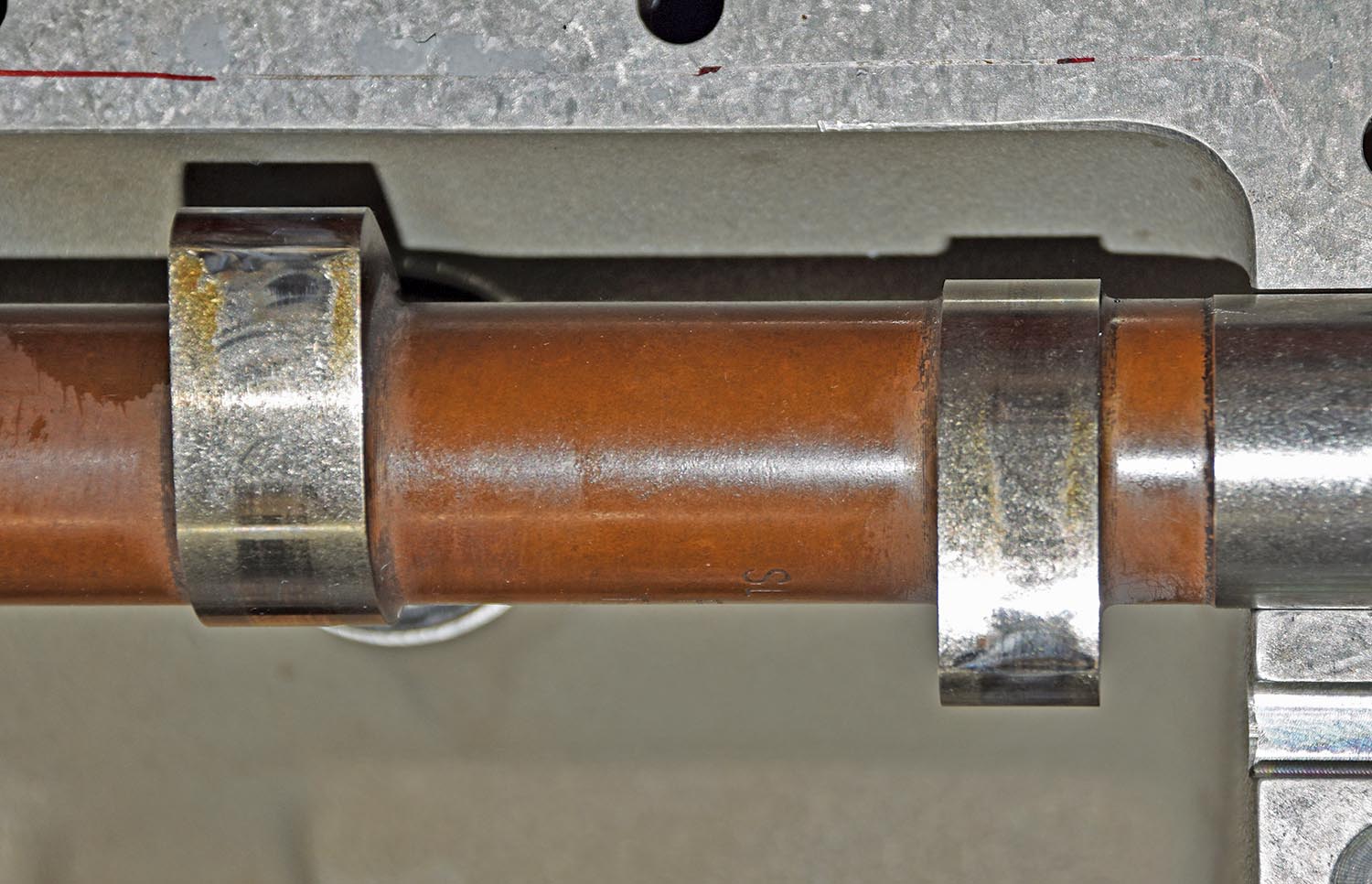
Inspecting the Cam
As you examine the camshaft and lifters you are looking for rust, pitting or, in extreme cases, metal being wiped off the cam lobes. Sometimes the damage is easy to see, but surface rust can be harder to evaluate. If the cam has rust that cannot be wiped off, especially if there is any sign of pitting, it needs to come out. The lifters are the same in that rust that can’t be wiped off it means big trouble. It will only get worse. If you are unsure, have someone with experience working on your type of engine take a look. It is a big decision to move from a top overhaul to a complete overhaul, with big cost implications. But, if you need it, you need it.
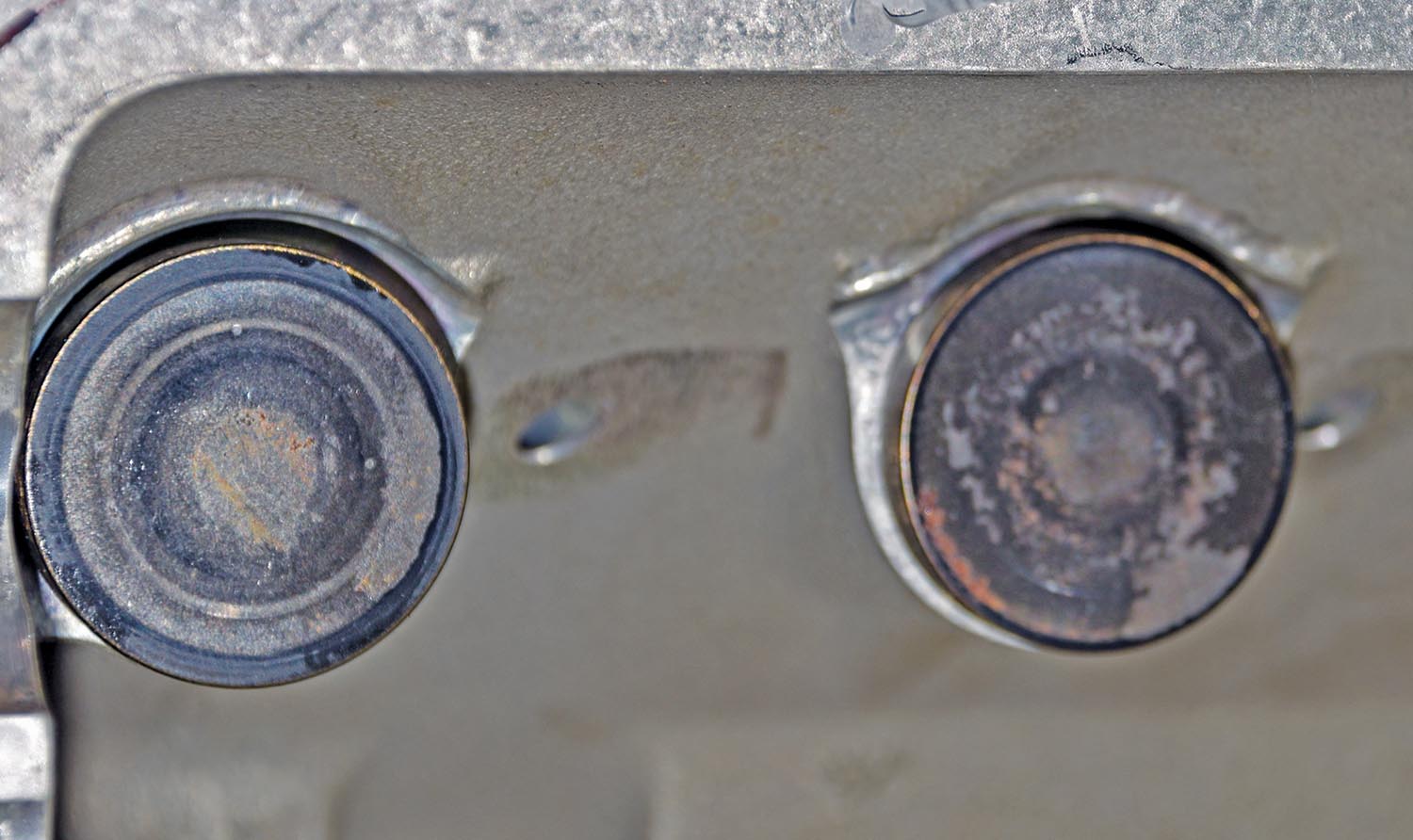
In the case of our engine there was a lot of surface rust evident on the cam and some of the lifters, so it looked like a complete overhaul was inevitable. That being the case, we still asked for a second opinion. We went ahead and removed all four cylinders just to get a better view, but that only gave more confirmation of the initial verdict.
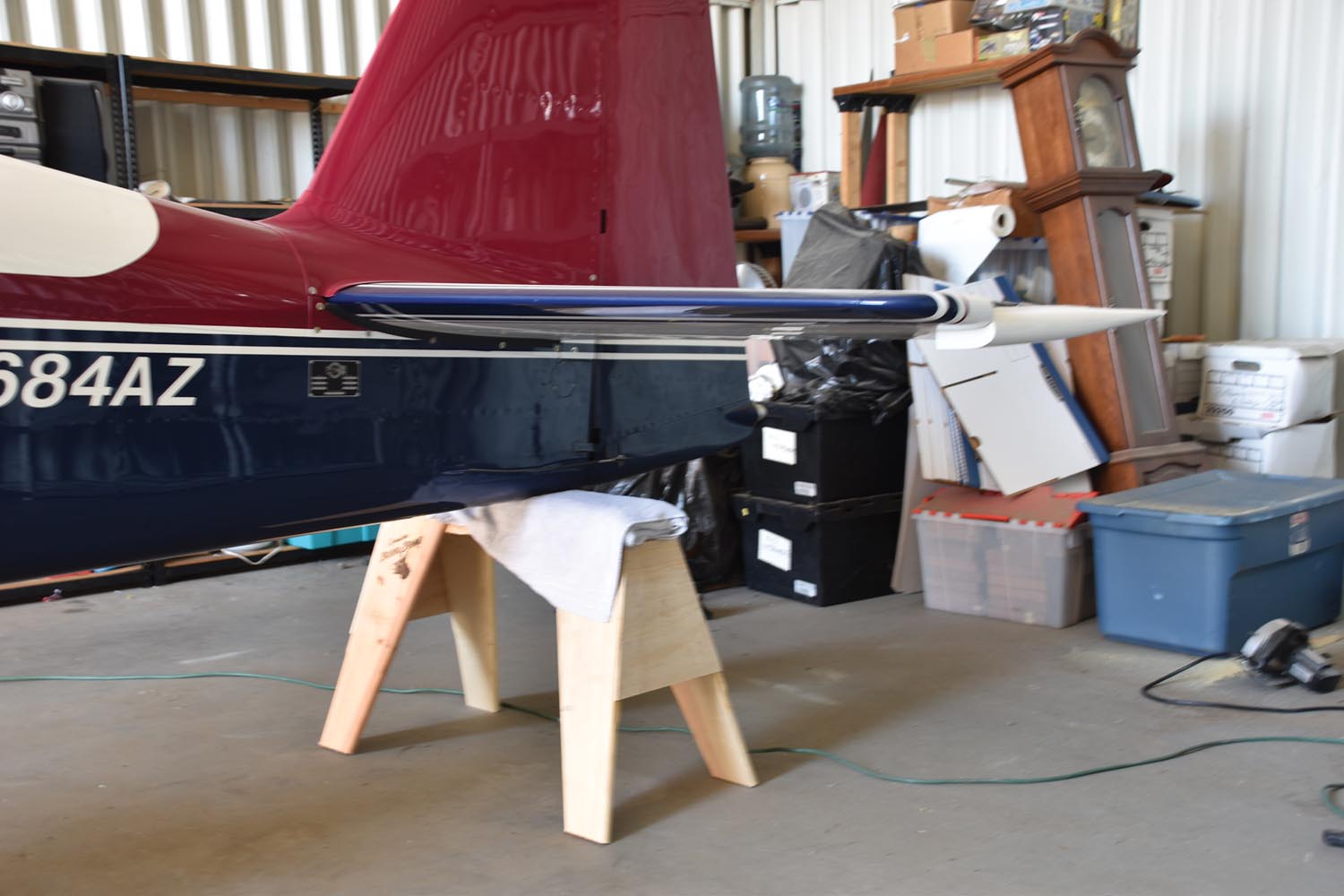
Engine Removal
With the fate of this particular engine now known, it was time to remove it from the airplane. To do this we removed the fuel injection servo and the controls for the throttle, prop and mixture. The magnetos came off next to make it easier to get the engine through the engine mount. The owner decided to leave the wires in the plane, so the ignition wire caps were detached from the magnetos. Time will tell if this was a good plan. Oil and crankcase vent lines came off next with the oil lines and fittings getting plugged. The prop had already been removed, admittedly prematurely, so it was not in the way of engine removal. With an engine hoist hooked up to the Lycoming lifting ring, the engine mounts were unbolted and the engine slid forward. The next stop is the engine shop, in this case Corona Aircraft Engines.
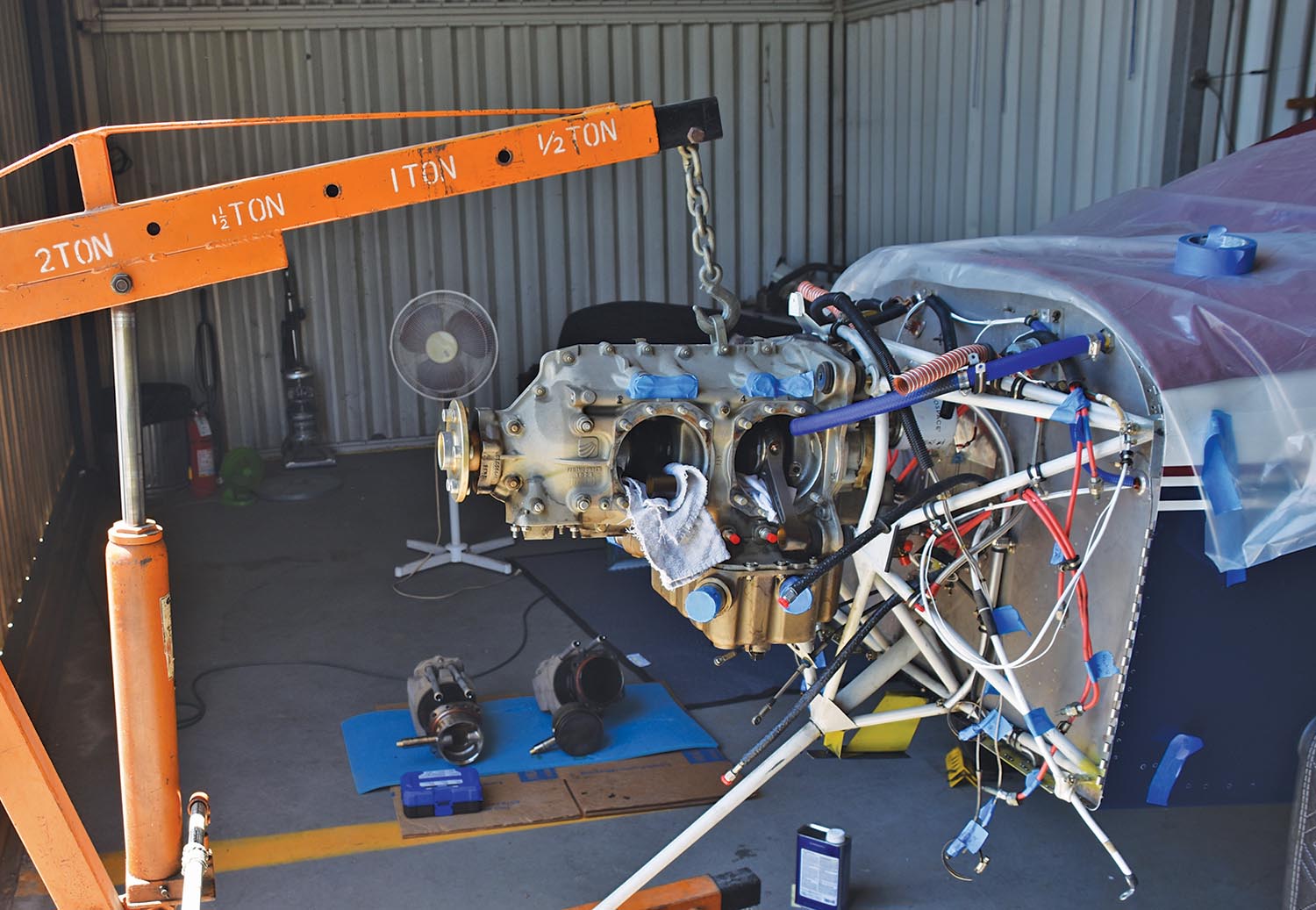
The engine was placed on a pallet and the cylinders placed in individual boxes with their related parts and hardware. Other parts were labelled and safely stored for the reassembly and installation process. The cylinders may very well end up being replaced, but until that is determined, it is best to act as though you will be reusing everything. If you don’t need a part that you kept, it is easy to dispose of it later. However, if you later need to buy a part you discarded, you will end up wasting money in a process that is already costing plenty.
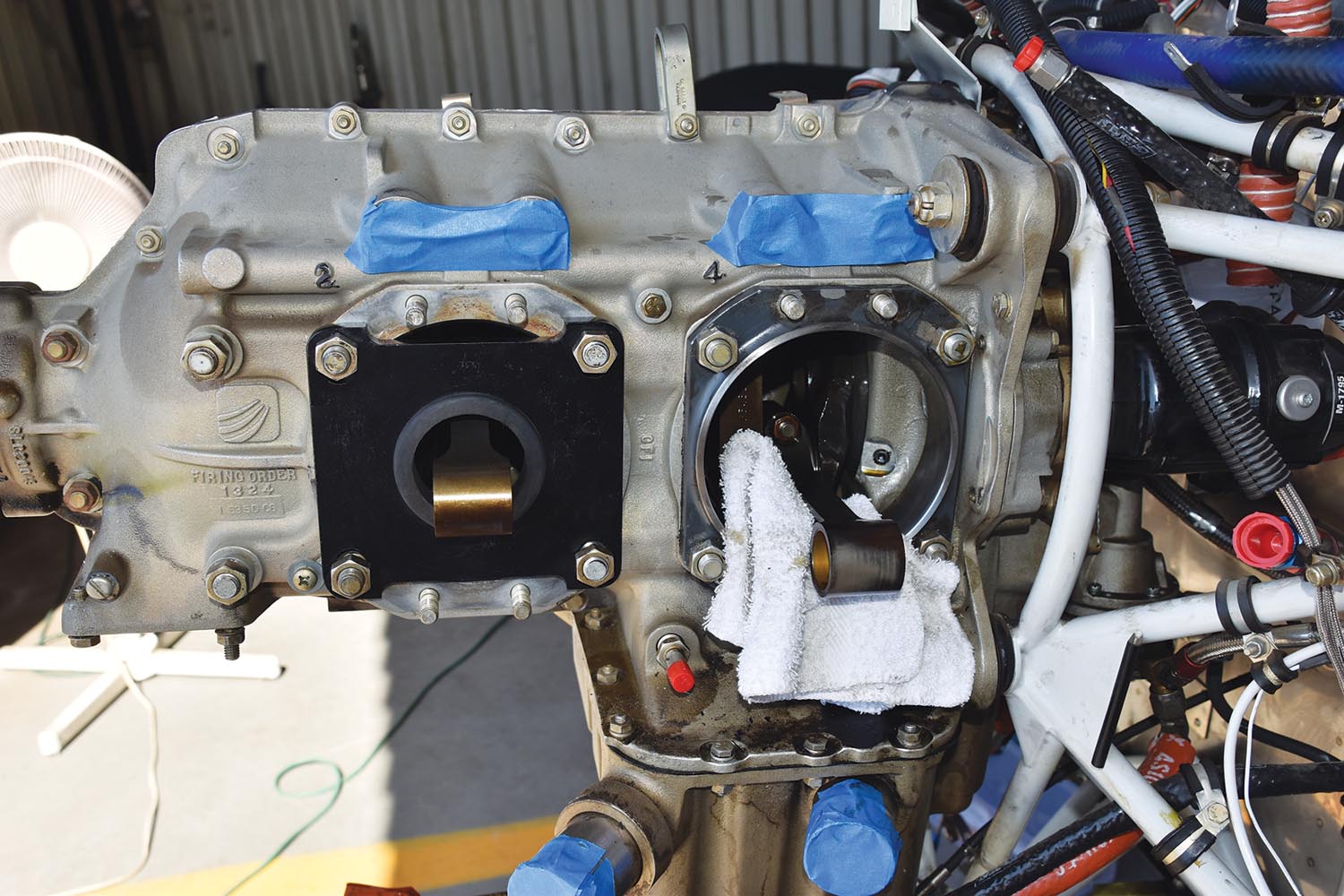
The Evaluation Process
At every condition inspection or obvious signs of engine trouble your engine evaluation process will likely include these steps:
- Spark plug removal and evaluation—an engine will reveal much about how it is running with a look at the spark plugs.
- Examination of the oil filter and sump screen—this is where metal that used to be attached to the cam and lifters will likely end up.
- Review oil analysis trends, assuming you are doing this—a spike in iron is a likely indicator that steel parts are wearing out.
- A differential compression test—this is where big problems often show themselves, especially valve problems.
- A borescope examination of the valves and cylinder walls—this is where our subject engine failed to meet normal expectations.
- Other factors to consider would include recent engine performance and oil consumption. While total hours since new or since major overhaul are a factor, hours alone are not a good reason to tear an engine apart.
- If and only if the borescope examination justifies it should more invasive procedures be considered, such as removing cylinders.
- If one cylinder is bad, there is no need to replace other cylinders unless they are also bad. If all cylinders need to be overhauled or replaced, there is no need to automatically go to a complete engine overhaul. Avoid unneeded work to minimize maintenance-induced failures.
- On the other hand, if you at the point of needing to replace the cam and/or lifters, the added cost of a complete overhaul may well be justified.
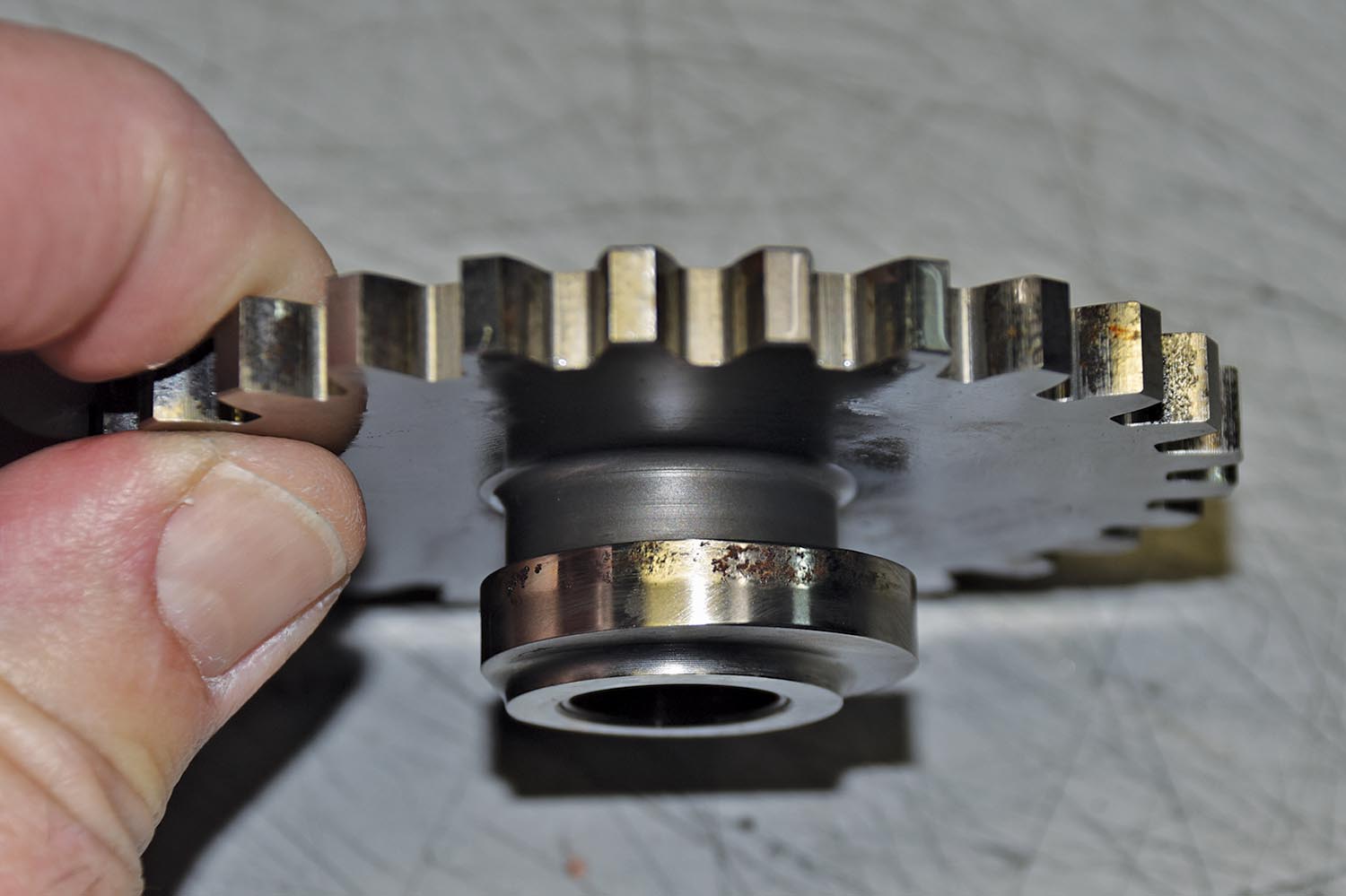
This accessory drive gear with the fuel pump cam has also fallen prey to the rust inside this engine. Hopefully a full examination of the engine now that it is apart will not reveal any more surprises like this.
What to Do with This Engine
With the engine apart at the engine shop it was time to decide just what to replace and what to keep. The cam and lifters were definitely not going to survive. One of the accessory drive gears had serious corrosion damage, so it too was headed for the trash. The cylinders were in various states of rust damage, so whether or not they can be overhauled versus replaced remains to be seen. There is a good chance that at least some of them will clean up with a bore job to .010-inch oversized. The others will get scrapped and replaced with new. Since overhauling a cylinder costs about half of what a new cylinder costs, overhauling is a serious consideration.
The crankshaft, rods and case looked good, so there is no need to spend a lot of money on them unless being able to call the engine overhauled is of value. In the case of an engine with 281 hours on it, there isn’t much value added with an overhaul versus an inspect and replace as necessary (IRAN). The owner seems likely to go with IRAN to save the costs of working over the cases, overhauling the magnetos, and other required work as per Lycoming Service Bulletin 240W. In this particular case, the cost saving of IRAN as opposed to a field overhaul is about $5000, depending on how many cylinders need to be replaced. With a higher-time engine, the decision process might be different, since the value of a plane with a mid-time engine versus an overhauled engine would be significant.
The moral of this story is fly your plane! If you can’t for some reason, be sure to protect it from corrosion damage. As the song says, “rust never sleeps.” That means that your efforts to keep corrosion at bay should be constant.










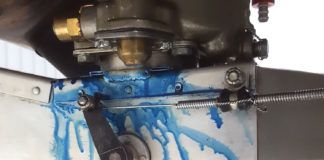
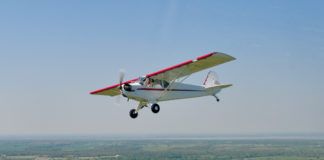
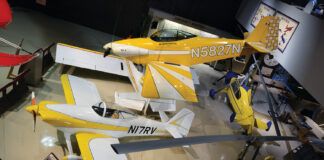

Rotax 912 engine Gear Box case:
The heavy maintenance manual calls for checking of the “radial gear backlash at the propellor flange” when the gearbox is installed. The maximum wear limit is only 0.2mm. If the prop flange is moved in a radial direction I don’t understand how this would be measuring gear backlash. I could see this if it was moved in a rotational direction, but I imagine the backlash will be much more than 0.2mm.
Cam anyone clarify exactly what movement is to be measured and how ?
Great Pictures from a Part 147 Instructor, This was Very Educational and Detailed. Thank you.